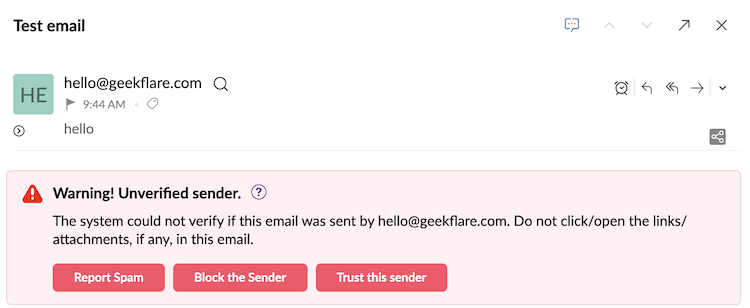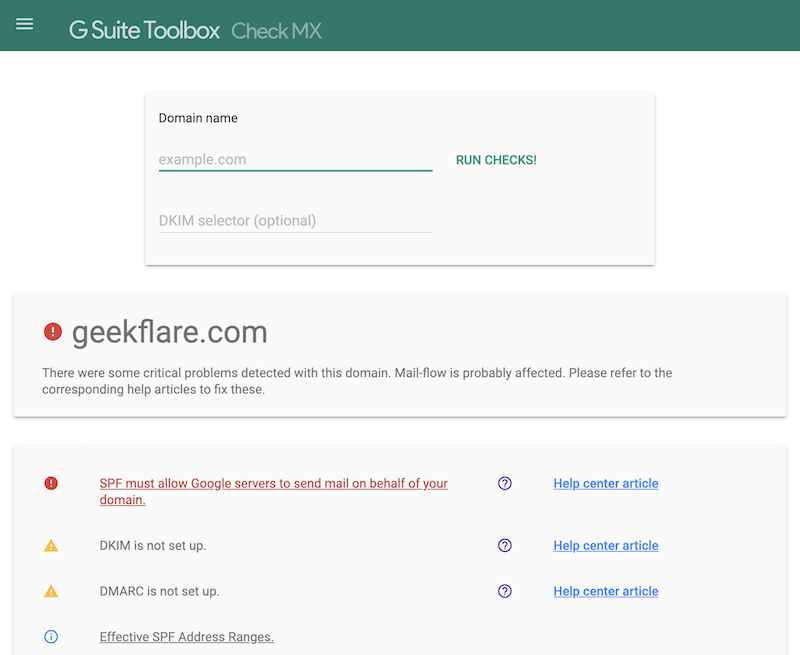How do you know your email is not going to spam?
Or, flagged as unverified sender like below.

I was setting up OpsNews, and during my email test, I realized the above warning when I sent an email from my Geekflare domain to OpsNews.
That doesn’t look good. Imagine getting flagged your business email like that. Its a trust issue.
How do you ensure your sending email domain is correctly set up for better email delivery and avoid going to spam?
Check the email authentication method.
First thing first, check your domain on G Suite Toolbox. Alternatively, you can use this tool to test as well.
I did below, and you can see its not good.

No wonder Zoho Mail flagged my email.
How did the test go?
If you got a warning for SPF, DKIM, and DMARC like me, then you got to fix them soon!
What is SPF, DKIM, DMARC?
Let’s understand what it does.
SPF (Sender Policy Framework) – is very important, and it MUST be fixed. It is an email authentication method that helps to verify the message is being sent from an authorized server. Setting up SPF helps to prevent spoofing, spam, and improve message deliverability.
DKIM (DomainKeys Identified Mail) – it adds a signature that gets verified by the receiving server to ensure the messages are not forged or changed during transit.
DMARC (Domain-based Message Authentication, Reporting & Conformance) – it tells the receiving server to checks SPF and DKIM to verify the emails are coming from the authorized servers. You need to define an enforcement policy where you can instruct what action to take when an authentication check fails. You can guess, DMARC is only effective when SPF and DKIM are correctly setups. I would suggest checking this for further reading.
How to setup SPF, DKIM, DMARC?
Configuring them is done on the domain level. All of them can be added as a TXT record.
The first thing you need to find out is the value you need to setup. And the value differs from the email hosting provider.
For SPF, you can contact an email provider to find out the SPF records you need to use or refer to this list.
For DKIM, most likely, you need to generate the DKIM selector from the email hosting admin area.
For DMARC, check if your provider support DMARC, define the policy how you want to handle the authentication, and configure them accordingly.
If you are not sure, then alternatively, check with your email support.
Conclusion
Your email is essential for your business communication. Don’t let it land to spam or someone spoof that.



